UNI-Dome (1974)
By the late 1960s, students, faculty, and administrators at the University of Northern Iowa understood that the university needed to improve both its athletics facilities and its performing arts facilities. The building now known as the UNI-Dome can be seen as a result of both of these perceived needs. On one hand, the Dome can be seen as part of the complex of athletics facilities that began with the Physical Education Center and will shortly culminate in the McLeod Center and the Human Performance Center. On the other hand, the Dome can be seen as part of the effort to offer venues for various kinds of performance; this effort began with the Strayer-Wood Theatre and ended recently with the completion of the Gallagher-Bluedorn Performing Arts Center.
After almost thirty years of service, the UNI-Dome is a well-known landmark on the UNI campus. Its sheer size dominates the landscape and skyline. It is used for athletics events, convocations, commencement, concerts, exhibitions, trade shows, and a variety of other performances and presentations. At this point in its history, many people find it hard to believe that anyone could have opposed the building of such a popular facility. However, developing the project was an enormous undertaking carried out against strong opposition and rising construction costs. And keeping the building in working order since its construction has posed many significant challenges along the way.
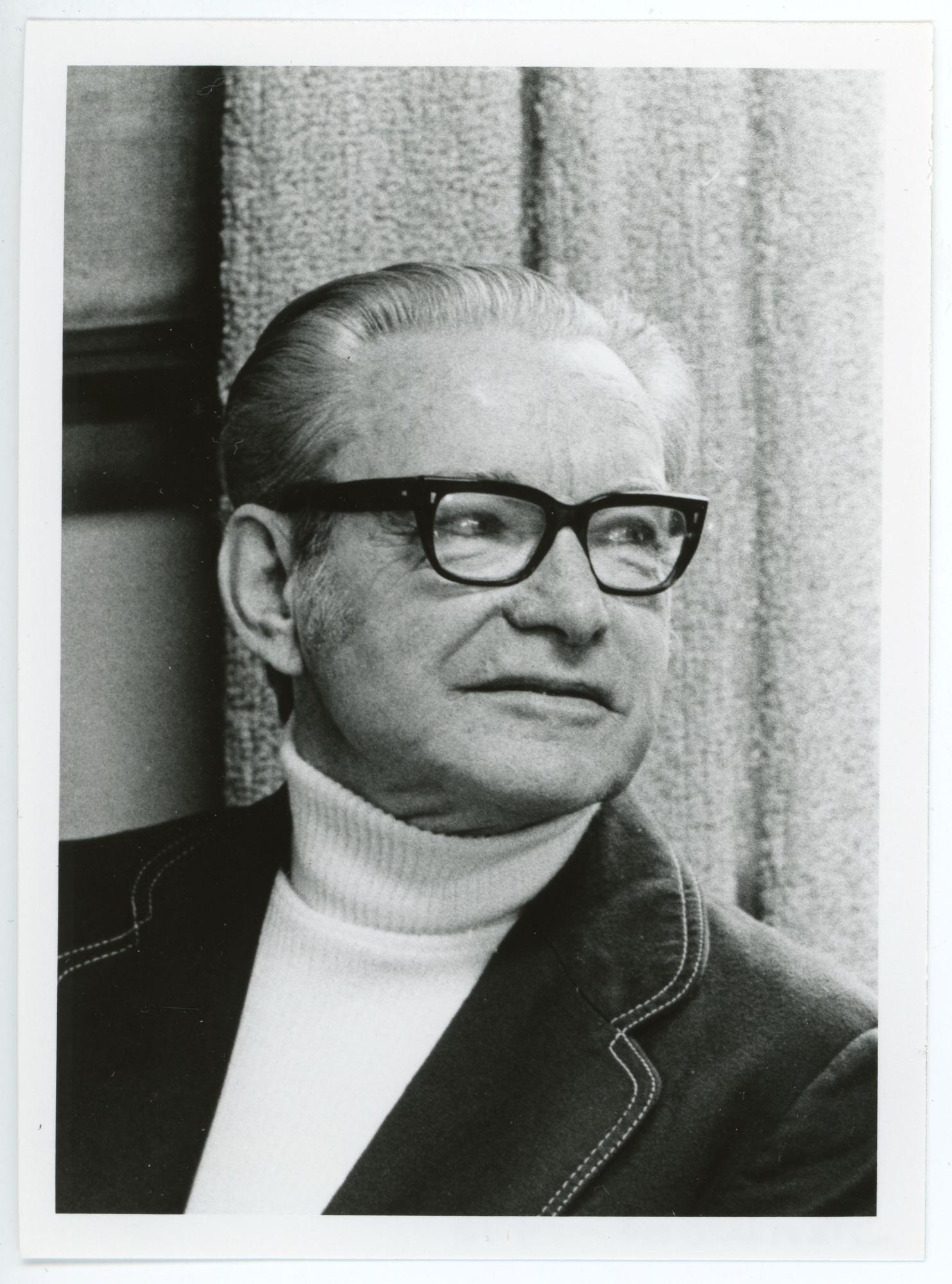
Developing the Idea
In February 1968 Professor Stanley Wood, chair of the Ad Hoc Committee on Auditoria Needs, reported his committee's findings to UNI Director of Technical Services and Planning, Marshall Beard.
The group recommended three facilities: an auditorium seating 2000, a theater seating 800, and a "coliseum" seating 10,000. The total cost of the three facilities would be $9 million, with $3 million for the auditorium, $2 million for the theater, and $4 million for the coliseum. $5 million would come from the UNI Foundation, and the rest would come from "other sources". The coliseum would be used for athletics events, large meetings, conventions, and commencement ceremonies. A target date of 1976, the UNI Centennial, seemed appropriate as the time when these funds would be available.
By early 1970 the idea of some sort of a domed facility, possibly modeled after the "Mini-Dome", now known as Holt Arena, at Idaho State University, had emerged for consideration. This facility would be multi-purpose, providing a single site for football, basketball, track, concerts, physical education, and recreation. The UNI Foundation commissioned a study by the Cumerford Company of Kansas City, Missouri, on the prospects of fund-raising for such a project. Despite discouraging survey results, the UNI Foundation decided to start a $10 million Centennial Capital Campaign in late 1972. The Board of Regents unanimously supported this decision on December 15, 1972.

The first phase of the capital campaign was to raise money for a domed coliseum, with a seating capacity of 12,000. When sufficient funds had been raised for the coliseum, campaigning would begin for a theater and a fine arts performance facility. Officials said that this priority was established because surveys revealed that raising funds for an athletics facility would be easier than for theater or fine arts facilities. Establishing this priority led to bitterness among some faculty and community people that probably did not disappear at least until the construction of the Gallagher-Bluedorn Performing Arts Center in the late 1990s.
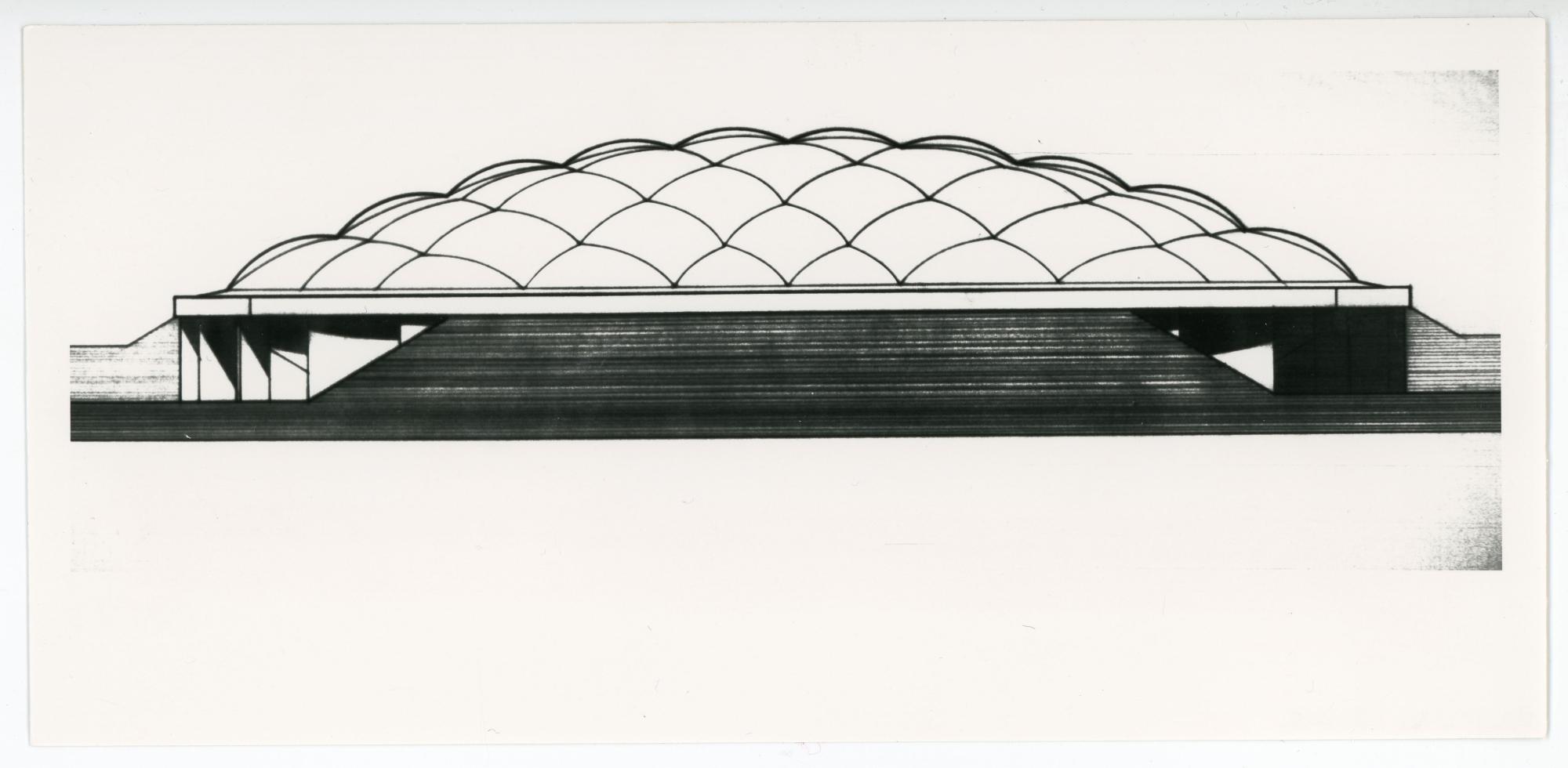
By early 1973, the UNI Foundation commissioned David Geiger and Horst Berger, P. C., of New York, in association with architects Thorson, Brom, Broshar, and Snyder, of Waterloo, to develop a need and scope study for a domed facility. Geiger and Berger were consulting engineers for the United States Pavilion at Expo 70 in Osaka, Japan. That pavilion featured the largest clear span, air supported roof hat had been built up to that time. The consultants would also determine what the cost of building such a facility at UNI would be. Director of Alumni Services Lee Miller still hoped that $8.5 million would cover both the coliseum and a performing arts center. While most of the money would still come from private sources, student fees would also be used. Director of Athletics Stan Sheriff noted that the fee would not be new. It had been collected since 1966 and portions had been held in a building fund, where, by 1973, $640,000 had accumulated. He also noted that UNI might begin to charge students a separate fee for admission to athletics events. Mr. Sheriff said that he believed that a majority of students would support the changes.

T. Wayne Davis, president of Latta's Bookstore (now University Book and Supply) and a UNI alumnus, was named chairman of the capital campaign. In a news conference in April 1973, Mr. Davis, Mr. Miller, and UNI President John Kamerick talked about the campaign and the Dome. At that point about $3 million had been pledged. This was seventy percent of the projected $4.5 million cost for what was already being called the UNI-Dome. The prefix of the name--UNI--is pronounced "you-knee" to play upon the word unique. Officials hoped to be able to keep the facility open sixteen to eighteen hours per day. They said that the plastic roof would be supported by cables. Eight large fans would pump air into the dome and inflate the roof to its domed shape. The lightweight roof would impose little additional weight to be supported, and, consequently, the foundation and support ring would not need to engineered as rigorously as it would be for a conventional roof. This would reduce construction costs and speed up the building process. Officials claimed that the translucent roof would help to reduce the need for artificial lighting inside the Dome. The circular ring of the Dome would be 464 feet in diameter. The roof would rise 115 feet above the floor. The site would likely be west of Hudson Road, near the Physical Education Center. Officials hoped that the facility would be ready for the 1975 football season, but construction would not begin until all funding was in place.
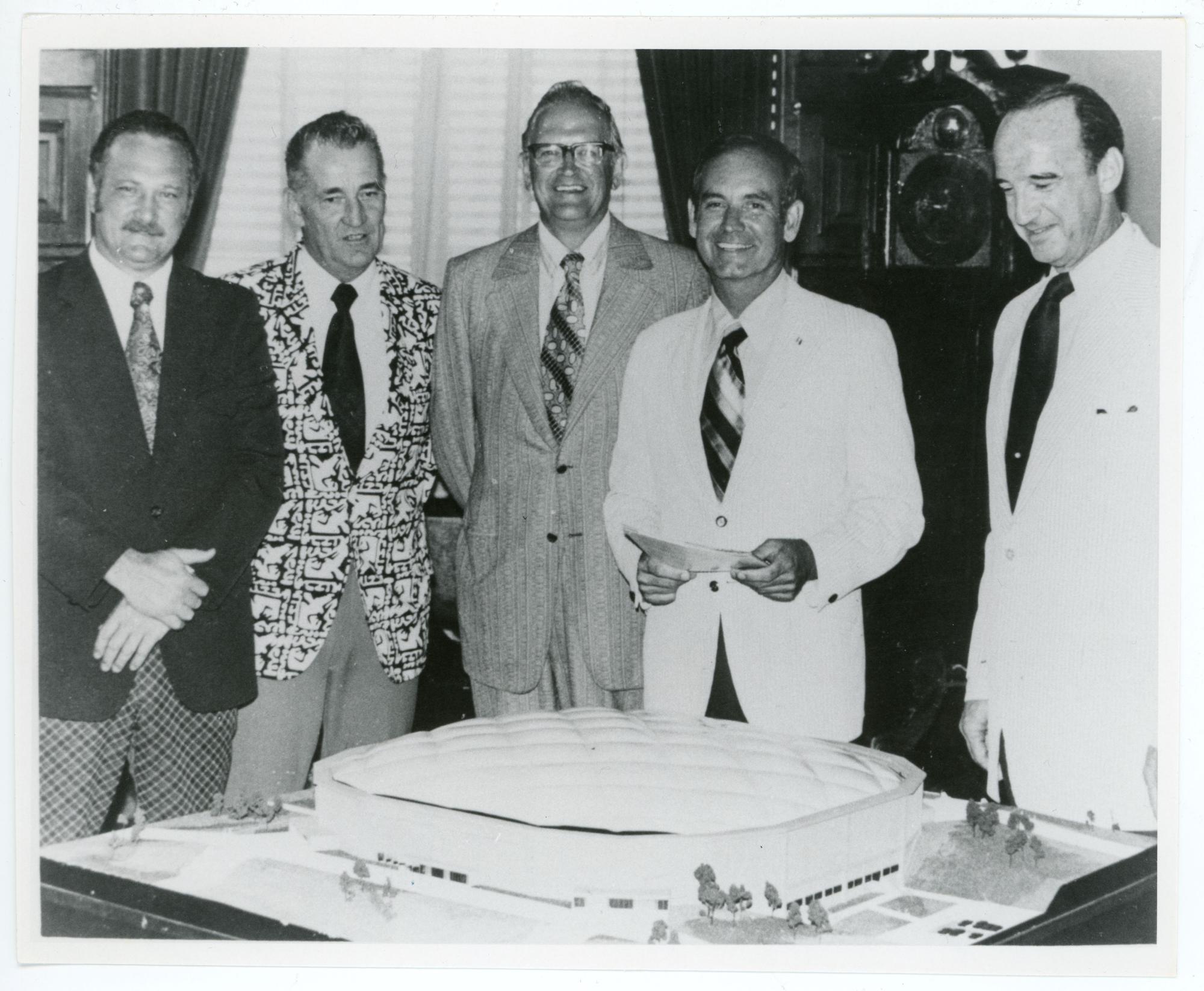
Vice President for University Relations and Development Edward Voldseth led a series of informational meetings on campus in May 1973. Though student leaders such as Jim Maas, president of the UNI Student Association, supported the Dome, a number of students had misgivings about the project. They distrusted, and perhaps misunderstood, the process whereby a portion of student fees would be channeled to the Dome. Some also disliked the perceived priority of athletics over fine arts facilities. Stan Sheriff continued to try to explain the process and to sell the idea of the Dome as an asset to the campus and the community.
The fall 1973 semester saw a great deal of focused opposition to the Dome project. In a letter to the Northern Iowan, Professor Scott Cawelti, of the English Department, questioned the need for such a facility, its untested engineering, its environmental impact, and the ability of the community to support it. A number of letters from students echoed these questions, with special emphasis on the use of student fees to help finance the project. Administrators continued to maintain that the Dome would be a good solution to many problems facing the campus and would also serve as a recruiting tool for impressionable high school visitors and their parents. They saw the Dome as an opportunity for UNI to stand out from other colleges and universities. At the time, just six years after the school had become a university, this was a powerful argument. For many, the Dome represented an opportunity for UNI to distinguish itself by constructing a unique facility. In November 1973 Professor Edward Thorne, of the Speech Department, sponsored a resolution calling for the faculty to oppose the project, but the resolution was soundly defeated, 202-43. UNISA, the student government, held a similar meeting later that month, but no vote was taken. In December, a poll taken by one of Professor Dhirendra Vajpeyi's political science classes found that 46% of UNI student respondents favored the Dome and 39% opposed it.
By February 1974 Centennial Campaign chair T. Wayne Davis reported that fundraising had reached 82% of its goal of $4.5 million, the projected cost of the Dome. In March 1974 Roy Carver, president of Bandag Corporation of Muscatine, extended a $750,000 line of credit toward Dome construction. With sufficient financial backing apparently in place, university officials could take the project to the Board of Regents for approval to begin construction. At just about the same time, a referendum on the Dome was included on the student government election ballot. Students voted in favor of the Dome project, 1009-595. The editorial writers for the Northern Iowan noted that grumbling about the project had led nowhere, and that students should face reality. The project was going forward, and "The UNI-Dome is the only way we're ever going to get money onto this campus to buy the things badly needed in the way of facilities, programs, and educational pursuits."

Building the Dome
In April 1974 the Board of Regents approved $2.5 million in bonding against student fees. UNI officials hoped that construction contracts could be approved by July, with construction to get underway shortly thereafter. The Board approved preliminary plans and financing in May. The project, now estimated at $4.8 million plus $320,000 in architectural fees, would concentrate on full development of the west side of the interior, with partial development of other areas as funds permitted. Initial seating capacity would be 8342. Architects estimated that utilities would cost about $44,000 annually.
By June the intercollegiate athletics staff was using a new logo with a "jaunty Panther" striding across the top of the Dome. Also that month crews began to conduct soil tests on the area west of Hudson Road. An editorial writer for the summer Northern Iowan wondered about the potential for increased flooding along Dry Run Creek, once the Dome and its parking areas were built. Other writers that summer complained about the administrative decision to begin charging students for admission to athletics contests in the fall of 1974. Students believed that they had had a commitment from the administration not to begin charging admission until after the Dome was completed.

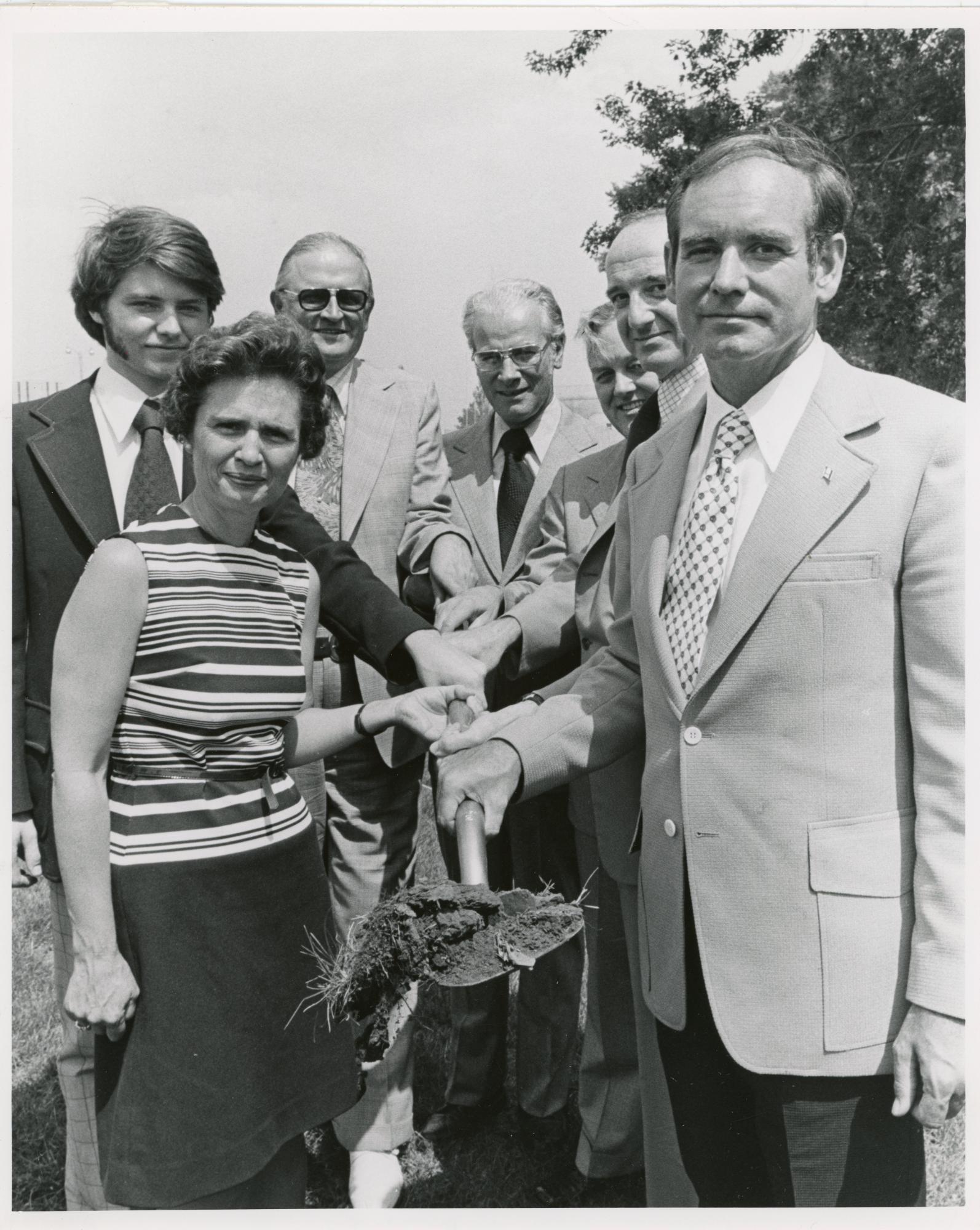
The projected budget continued to grow. In July 1974 the Regents approved a budget of $5.55 million. They also awarded the general contract to John G. Miller Construction Company of Waterloo, the mechanical contract to Young Plumbing and Heating Company of Waterloo, the electrical contract to See Electric, Incorporated of Waterloo, and the sound system contract to Sioux Sound of Des Moines. The groundbreaking ceremony for the UNI-Dome took place on July 26, 1974, with many visiting dignitaries on hand.
Construction got underway quickly, but rapidly rising inflation made the building of the Dome a worrisome rush for money. By September 1974, the cost of the project had risen to $7.024 million. Vice President for Administrative Services Robert Stansbury said "the bond market got very tough in May and June of 1974 and we had some tough thinking to do in order to save the project." Because state law at the time prohibited paying more than 7% on bonds, there was only one bidder for the issue. John Nuveen and Company of Chicago bid 6.999713% for a thirty-one year issue. UNI officials were very grateful to have even that single bid. Because of inflation, and the consequent increase in construction costs, UNI put portions of the project on alternate status: that is, certain items, such as additional seating, adequate landscaping, a finished playing field, and locker room facilities, would be added to the construction budget only when additional money became available. Heating costs alone were now estimated at $72,000 annually. About $975,000, instead of the proposed $300,000, was taken from the student activities building fund, leaving little or nothing left for a fine arts auditorium.
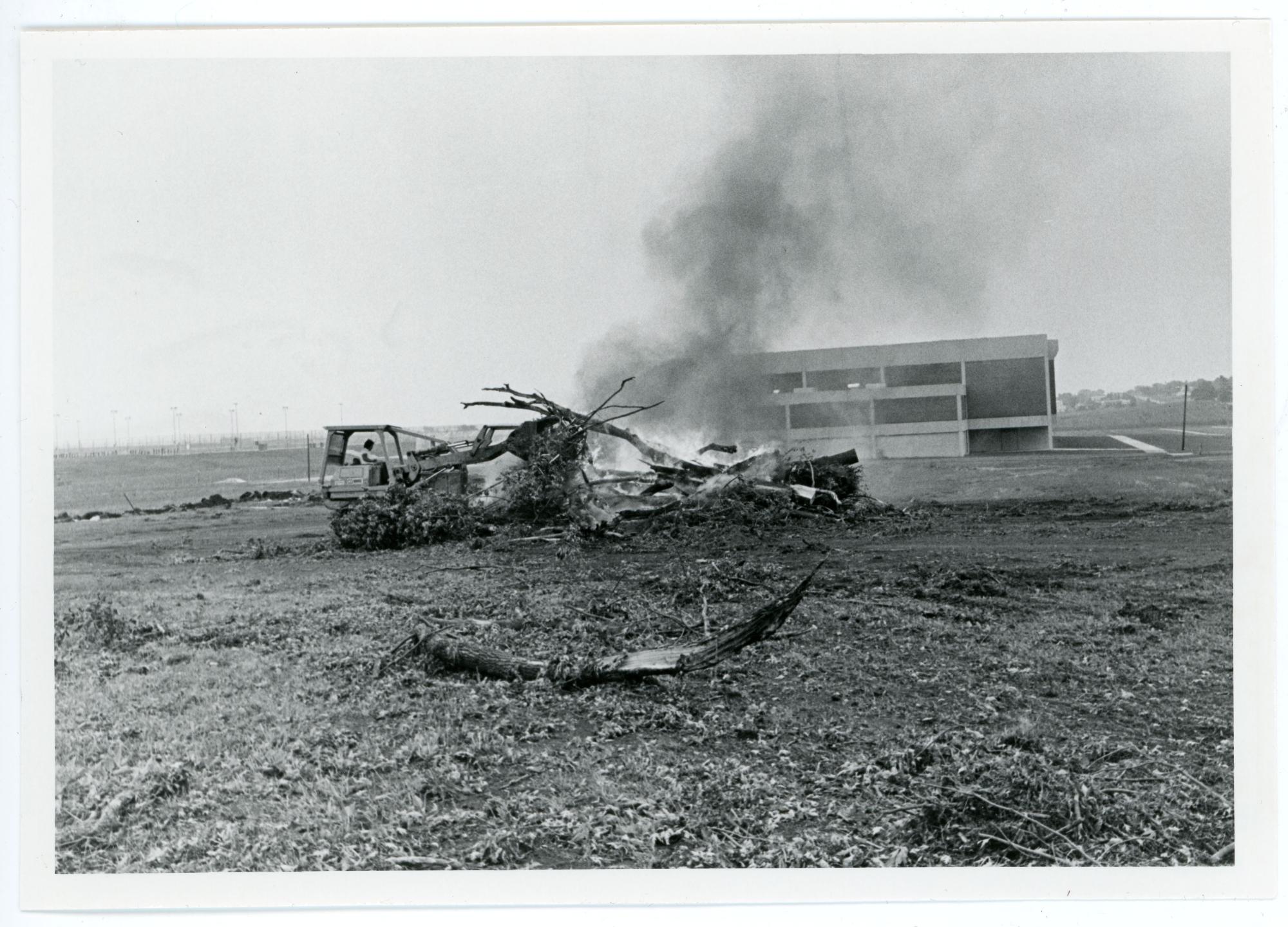
The rising costs reawakened some of the students and faculty who had earlier opposed the Dome. In an action applauded by the Northern Iowan, student Paul Kilmer filed suit in Black Hawk County Small Claims Court over charging admission to athletics events. The newspaper went on to encourage students to appear at the athletics ticket office to get tickets for the upcoming football game, noting "the Administration will have a hard time to justify not giving you a ticket. If you have any trouble, we suggest you ask whomever is selling the tickets if the athletic department or administration has ever gotten any formal approval from the Board of Regents to initiate this action." About two hundred students filled the lobby of the Men's Gymnasium (now West Gymnasium) to demand tickets. A heated exchange between the students and Stan Sheriff resulted. Students made accusations; Mr. Sheriff attempted to respond. Little was settled, and the students eventually drifted away without having secured their tickets. Perhaps the most notable outcome of that day was Mr. Sheriff's coining of the term "central administration" to refer to the locus of the decision to charge admission to athletics events. Since that time, at least on the UNI campus, that term has come to be used as an ironic description for any sort of nameless, faceless bureaucracy that operates behind the scenes.

Editorial writers in the Northern Iowan were quite upset with the whole business. They believed that students were going to end up paying more and getting less than had been promised to them less than a year earlier: "We think a line should be drawn, that students should decide how far they are willing to be pushed, and not allow any further indecencies beyond that point."
The UNI Foundation responded to the financial difficulties by increasing its fundraising goal by $1.1 million to meet the new $7 million dollar project budget. This increase from the approved $5.9 million budget would allow more seating and a double-layered roof fabric. Lee Miller said that a large portion of the additional money needed to be raised quickly to forestall even greater inflationary increases in construction costs. He outlined a special effort to attract large donations. For example, a donor who pledged $100,000 would have one of the Dome entrances named after him or her. The four entrances were eventually named for C. B. McDonald; John S. Latta, Sr.; T. Wayne Davis; and the Radell Sisters, Inez and Neva. Mr. Miller noted that inflation caused costs to rise $70,000 for each month that construction was delayed. He said that completion was still scheduled for September 1975.
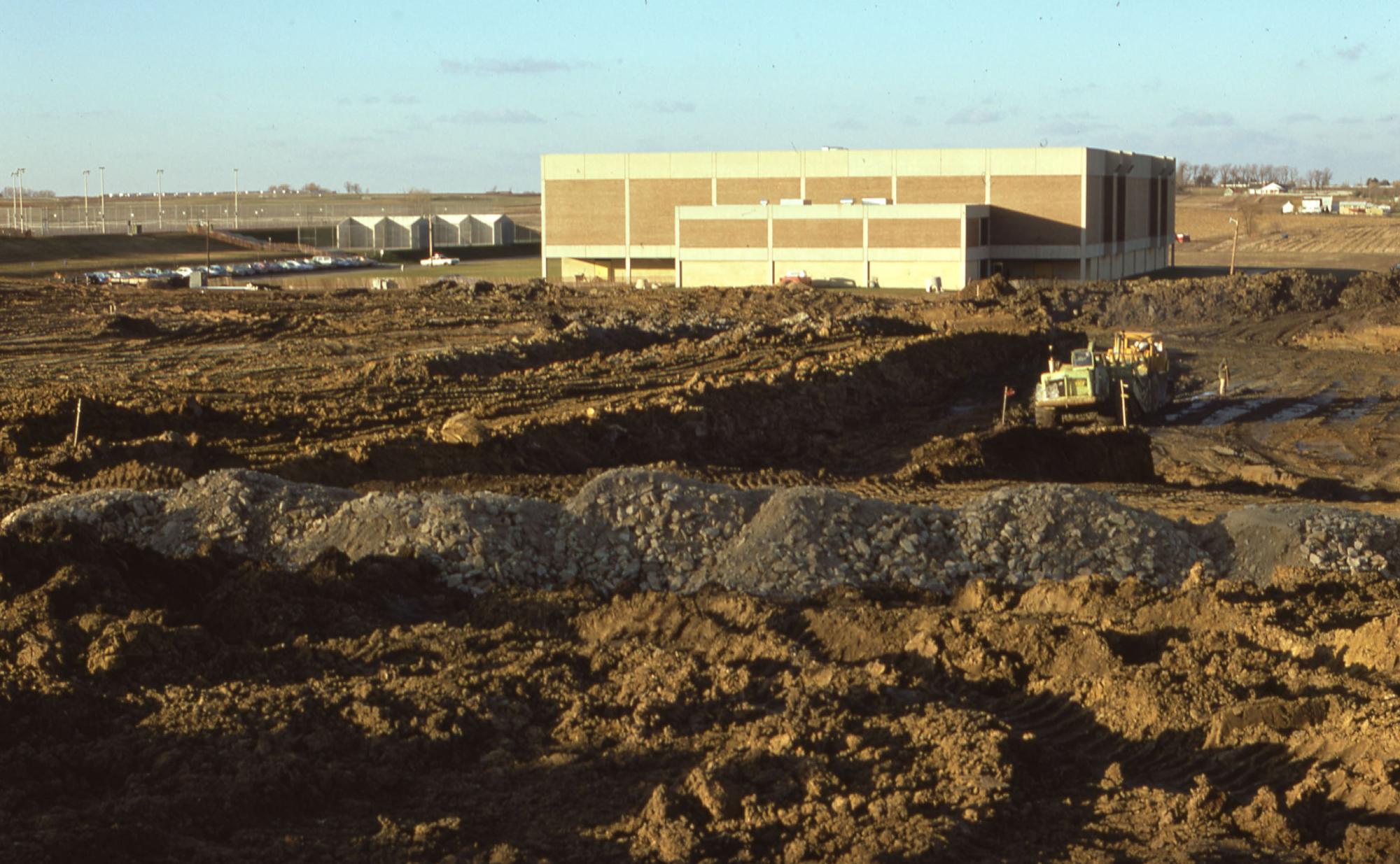
Another important infrastructure project associated with the construction of the Dome was the widening of Hudson Road. When Dome construction began in 1974, Hudson Road was a deteriorating, narrow, two lane road. To a certain extent, the Dome project caught the State Highway Commission by surprise: it was not even on the Commission's five year construction plan. But, due to the projected increase in traffic from potential Dome activities, the Commission hoped to move re-construction up to 1978 or 1979.
In October 1974 a group calling itself the Student Coalition organized to support Paul Kilmer's lawsuit and to try to become involved in decisions made on the use of student fees. The group realized that the Dome was a fait accompli, but said that it was "against the policies that allow student activity money to be used at the whim of Central Administration." The Northern Iowan urged students to attend the hearing of Mr. Kilmer's suit. Some students also began to chide the administration for not organizing the two boards, which would be involved with Dome governance: a policy board and a programming board. When President Kamerick set up the boards, students complained about being under-represented. Judge Everett Scott eventually ruled against Mr. Kilmer's suit.

In February 1975 a group of students called the Coalition of People Involved gathered signatures on petitions to name the new building the Richard M. Nixon Memorial Coliseum. In a bizarre twist, someone ran off with the petitions. A spokesman for the group, who claimed that the Young Democrats signed for his signature-gathering table in the Union, stated that he wanted "to stop construction of the Dome, and take the remainder of the money for a performing arts center. Education seems to be taking a second place at UNI." President Kamerick actually responded to this satiric re-naming effort.
Spring came late in 1975, but the Dome was taking shape. Director of Engineering Services Thomas Paulson said that construction was only slightly behind schedule, and that dry weather would really help to meet a November 1, 1975, completion date. By September, construction cranes were putting some of the massive side panels into place.
Just two months later, on October 31, 1975, the roof was inflated for testing. Lee Miller said that if everything went well, the roof would stay inflated, with an "Inflation Party" to be held on November 8. Everyone was invited to inspect the new facility. Many attended and enjoyed the open house. Panther kicker Jim Fransen tried, but could not hit the 115 foot high roof with a football.
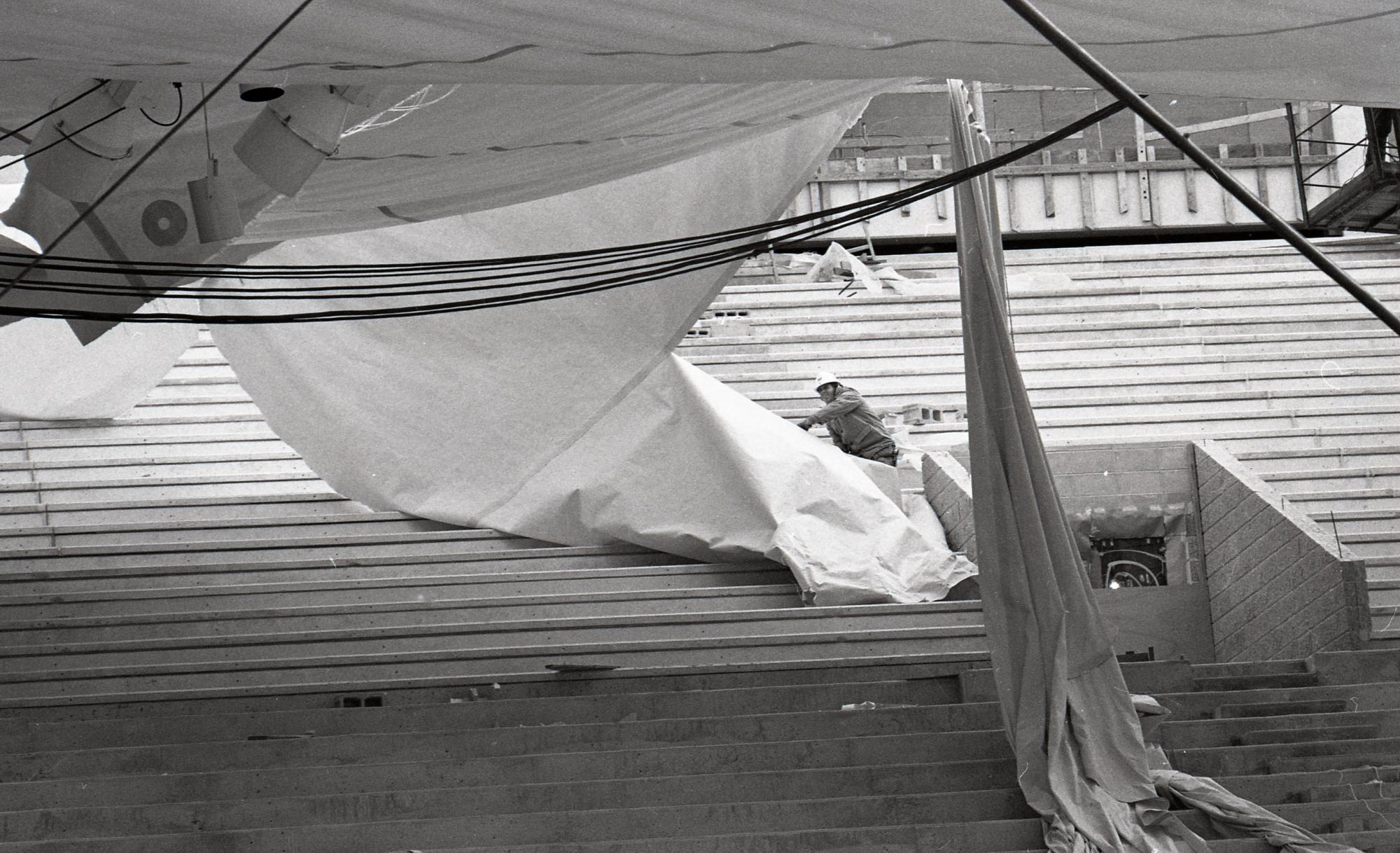
However, during a storm the next day, high winds tore out a panel of the fabric roof, and the Dome deflated. Heavy rains fell onto the now concave roof and threatened to tear even more of the fabric. An official from Dow Corning, makers of the roof fabric, shot holes into the sagging membrane to allow rainwater to drain and take the strain off the cables supporting the roof. The sequence of events that caused the problem seemed to have been set in motion by an interruption of electrical power that led to a partial deflation of the roof. More strong winds a week later tore off an additional seven panels. Yet another panel was lost before emergency repairs could be made.

With damages to the facility totaling over $100,000, the Northern Iowan, in a second-guessing mode, nonetheless made some good points. Why, the editors asked, was the Dome inflated without some sort of emergency power generator available in the event of regular power source interruption? And, with some people blaming lightning as a source of the problem, why were lightning arrestors not in place? While an official report confirmed the sequence of events that caused the damage, no clear answers to the questions posed in the Northern Iowan seemed to emerge. But in March 1976 the Regents approved construction change orders to include six foot lightning rods and an additional emergency generator.

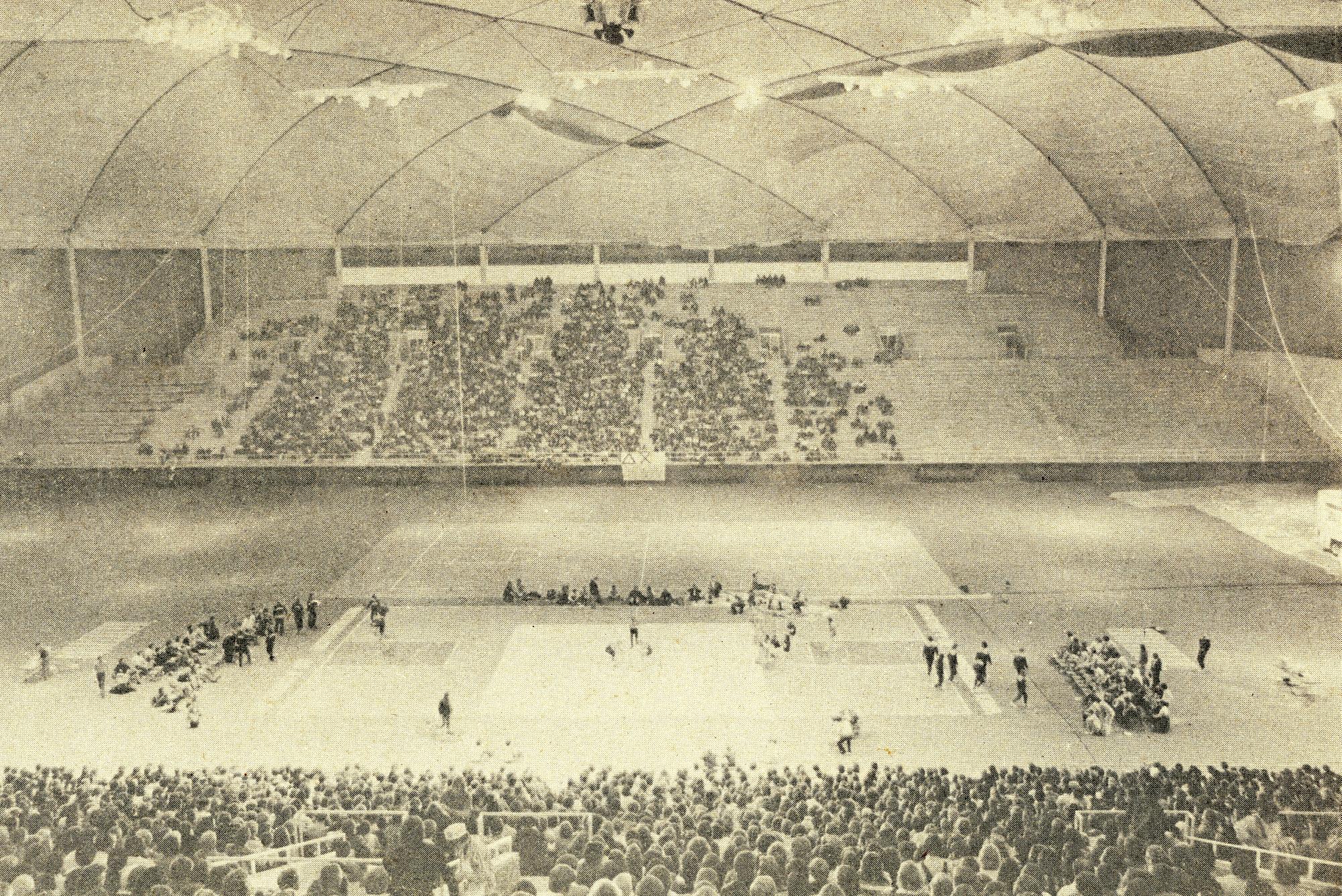
Hard-working crews repaired the damage quickly. The roof was re-inflated on November 29, 1975, and, despite nasty weather conditions, it stayed in place. By late January 1976, crews were installing the synthetic surface on the floor of the Dome. By February 7 the Dome was ready to be the site of the first official event: a wrestling contest against the University of Iowa. The Northern Iowan urged "Let's take advantage of this unique facility and enjoy the opportunities it has to offer. The appeal is there." A strong Iowa team defeated UNI, 31-8, but the crowd was awed by the new facility.
In other "firsts", the first football game, the alumni-varsity contest, and the first Commencement both occurred in May 1976.
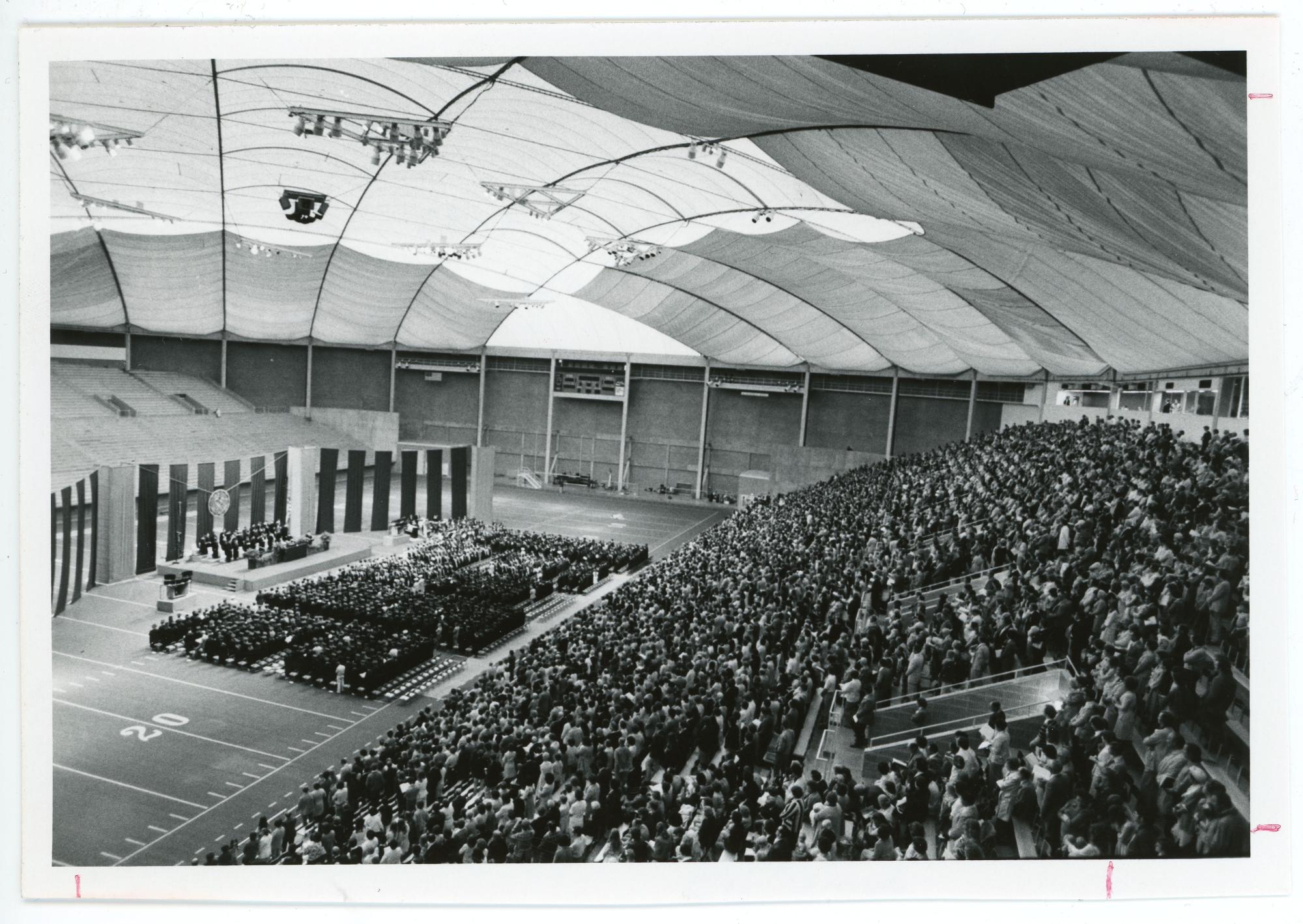
Using the Dome
Shortly after the Dome opened, an issue arose that has remained a topic of recurrent debate for most of the building's existence: would there be rock concerts in the Dome? And, if there would be concerts, who would perform? Vice President of Administrative Services Robert Stansbury was quoted as saying, "I cannot conceive of a rock type concert in the UNI-Dome." He cited potential damage to the playing surface and drug abuse by the audience as his primary concerns. But he also stated that each request for use of the Dome would be treated on an individual basis. As it turned out, "rock type" concerts were indeed offered in the Dome, especially in the building's early years. Well-known performers included Harry Chapin, Chicago, Alice Cooper, the Doobie Brothers, the Grateful Dead, the Who, Fleetwood Mac, Willie Nelson, Waylon Jennings, Dolly Parton, and the Rolling Stones. Even when it became apparent that the Dome could host rock concerts, though, there were a number of shows that never quite happened. Promoters, Dome officials, students, and performers were left to blame each other. Some groups seemed to perform quite satisfactorily in the Dome; others cited trouble with acoustics or equipment installation in the cavernous open space.
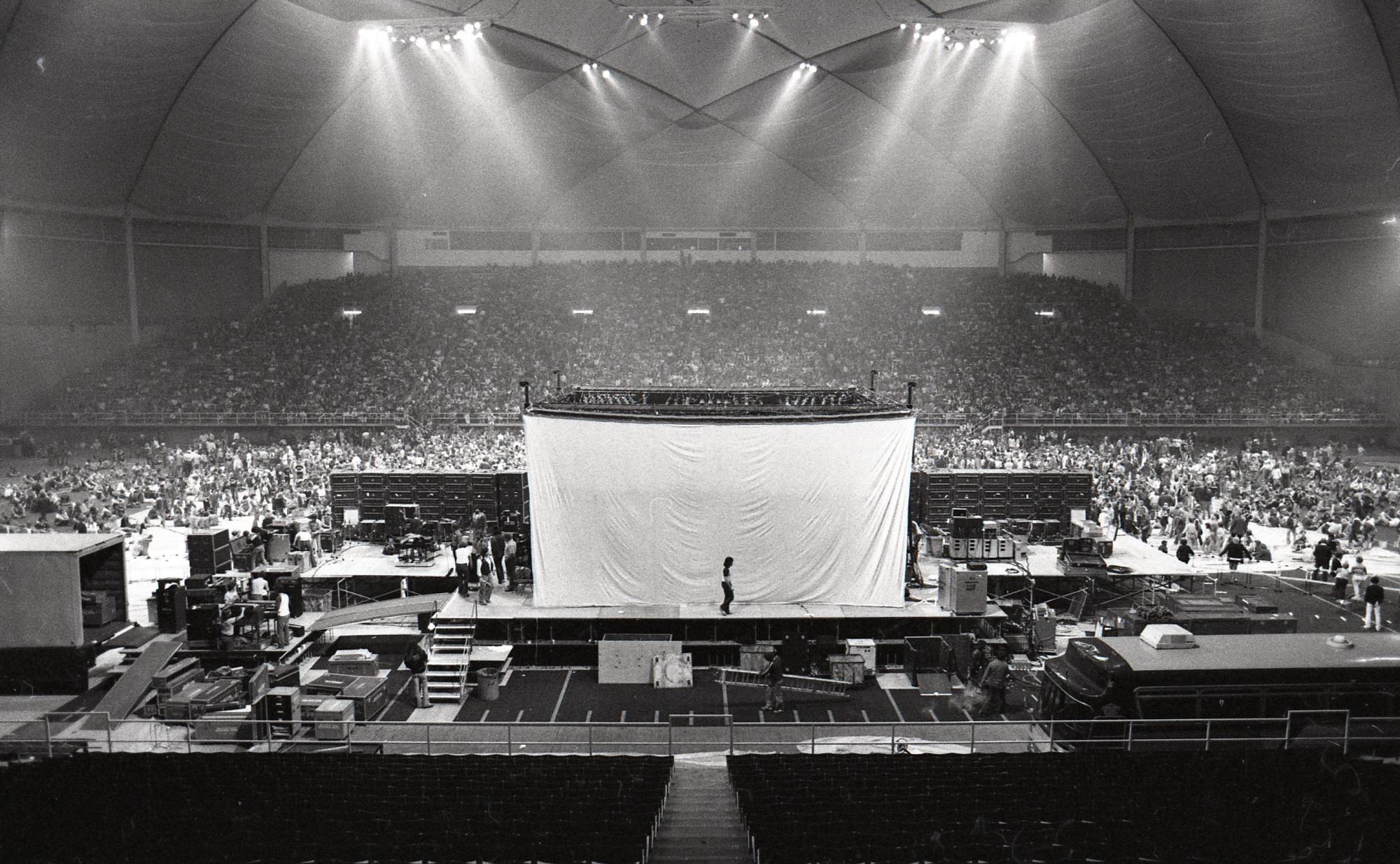
The weekend of September 3, 4, and 5, 1976, was set as the grand opening of the Dome. Harry Chapin performed Friday night. A dedicatory ceremony was held Saturday afternoon. UNI played Northern Michigan Saturday night. Interdenominational religious services were held on Sunday.
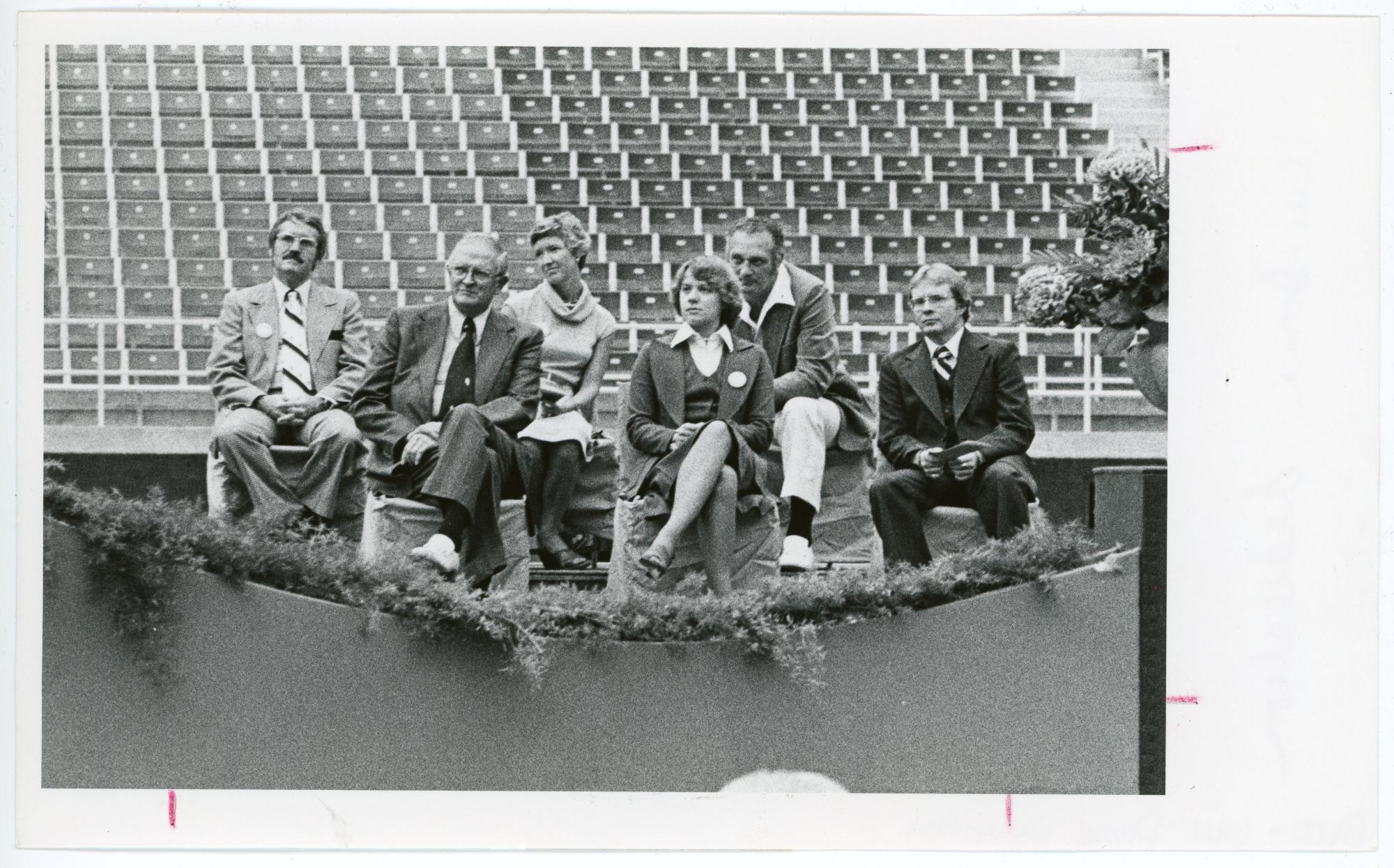
Another annoyingly familiar issue has been state of the Dome roof. Dome Service Manager Richard Brownell said, "When the Dome was completed, it was understood that some problems would still have to be worked out." In July 1976 Owens Corning added a sealant to the roof panel seams which would purportedly halt leakage. In January 1977 basketball and wrestling contests were moved to the West Gym because temperatures inside the Dome had dropped into the fifties, and condensation dripped from the roof onto the athletics areas. On June 30, 1977, the roof deflated again. Apparently the main fans failed, and the reserve fans could not keep up with rainwater pooling on the roof. Only one panel ripped in this roof failure. The roof was temporarily repaired and re-inflated by the next day, and permanently repaired in August.
By the time that the 1977 football season started, the complete complement of 16,392 permanent seats was ready.
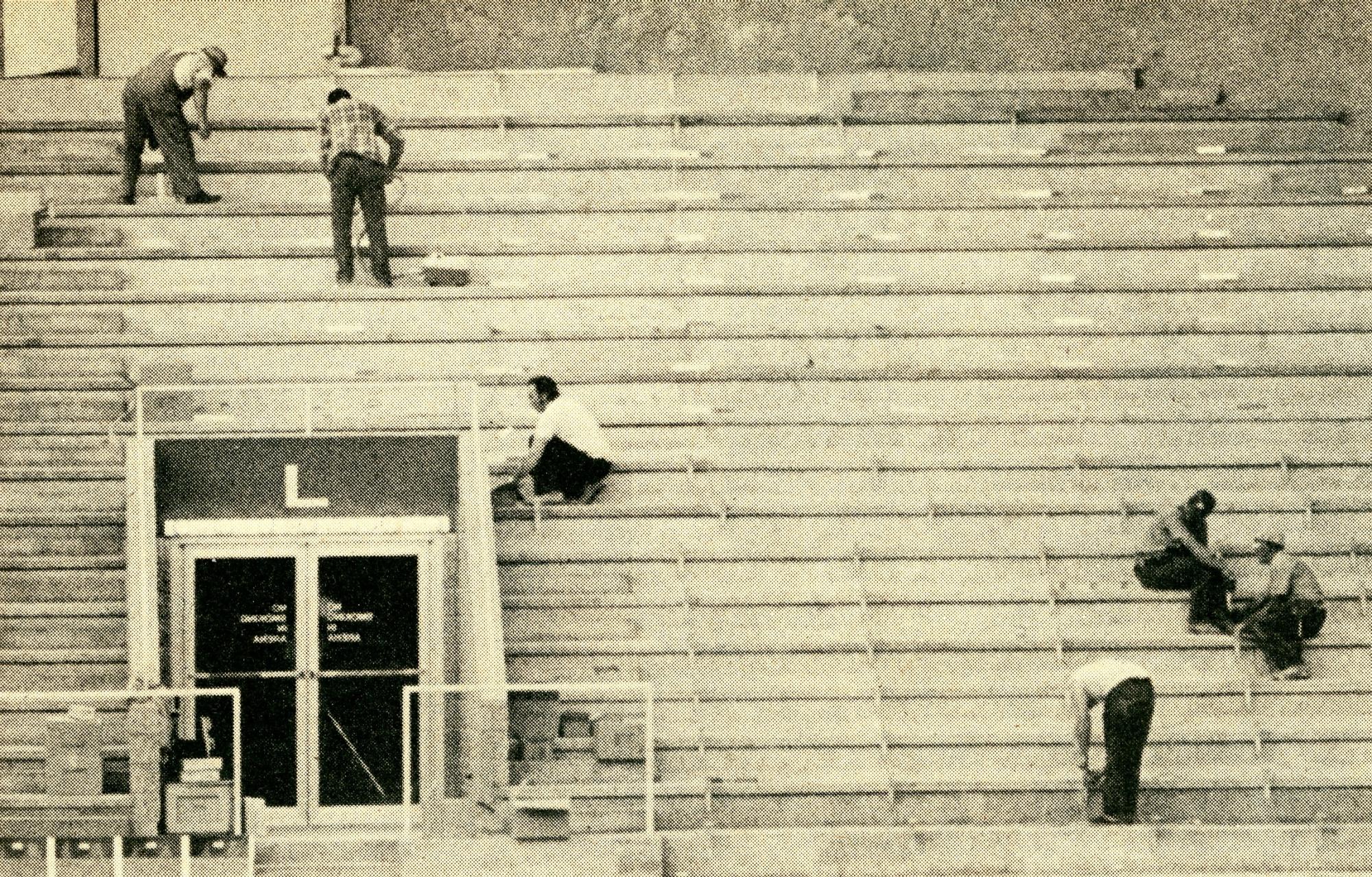

While financing for the Dome was in place, the Foundation still needed to raise money to service the debt. Specifically there was the $750,000 loan from Roy Carver that got Dome construction going. The principal was due in three equal parts on December 31, 1977, 1978, and 1979. The Foundation and the Alumni Association stepped up their efforts to meet these difficult deadlines. By September 1978 the debt had been reduced to $600,000. In December 1979 the Foundation sold $600,000 in industrial revenue bonds through the city of Cedar Falls. The term of these bonds was ten years, and the interest rate was reduced from a crushing 15.5% to a more manageable 7%. Lee Miller said that under the earlier interest rate, "Every year we had to raise close to $100,000 for the interest alone . . . ." The Foundation found the new terms much more within its means. The Foundation was ultimately able to pay off the debt in 1986 with money from donations by Inez and Neva Radell.
In the fall of 1977 a controversy arose over the use of the Dome as a symbol of UNI. Images of the new facility had begun to appear on such things as parking permits and stationery letterheads. Professor Robley Wilson, of the English Department, introduced a bill in the Faculty Senate to limit the use of the "Home of the Dome" slogan to athletics and alumni matters. While some UNI officials expressed particular pride in the Dome, Professor Wilson said, "This is not an athletic stadium where there happens to be a university. It's a university where there happens to be an athletic stadium." In January 1978, the Faculty Senate agreed with Professor Wilson, and voted to recommend to the administration that the Home of the Dome slogan be used only for athletics and alumni matters.

In 1979 a guard rail was installed around the high, exterior walkway, where the inflatable roof met the concrete ring. Members of Local 2659 of the American Federation of State, County, and Municipal Employees had complained that the situation was dangerous for employees who were required to go onto the inflatable roof to remove snow.
Consequently, the Iowa Occupational Safety and Health Administration ordered the installation of the safety measure. In 1983 the Regents authorized $350,000 to install new lighting in the Dome. The new lights would significantly increase lighting levels throughout the Dome. That same year the Regents also authorized $196,000 to construct additional office space on the east side of the Dome. In 1984 a new sign, costing $54,000, was installed between the Dome and Hudson Road to inform the public about campus events and UNI-Dome activities. In 1985 the Regents approved $81,745 for a new sound system.
In 1985, on the Dome's tenth anniversary, officials could point out a number of achievements. First, only about $125,000 remained to be paid on bonding debt; ongoing payments were ahead of schedule. Over four million people had used the facility for athletics contests, rock concerts, circuses, Commencements, and sports shows. The anniversary celebration included sand volleyball and inflation of hot air balloons inside the Dome.

A new scoreboard was installed for the 1986 football season. That same fall the Dome acquired a portable, wooden basketball floor. This floor belonged to Waterloo's McElroy Auditorium, which loaned it to UNI on the condition that it would be returned if it were needed in McElroy. Bids for new courtside seating also went out that fall. In 1990 student Rob Lorenson constructed a wire sculpture in the shape of a Panther. He hoped that shrubbery would be grown to climb over the sculpture and turn it into a topiary.

In 1991 the floor of the Dome was re-surfaced with a new kind of composite material at a cost of $817,000. And in 1993 the football field was named in honor of Stan Sheriff, former football coach and athletics director, who was also one of the strongest proponents of the UNI-Dome project. Mr. Sheriff died January 16, 1993. UNI held a memorial service and field dedication ceremony for Mr. Sheriff on April 24, 1993, prior to the spring football game.
On December 7, 1994, during a women's basketball game in the Dome, the roof began to leak under the burden of heavy snow. With water dripping onto the court, game officials ended the contest. Snow accumulated faster than it could be cleared and a tear in the roof fabric appeared. The tear ultimately caused the roof to deflate for the first time since 1977. High winds then tore out a large, triangular piece of fabric near the north end of the Dome.
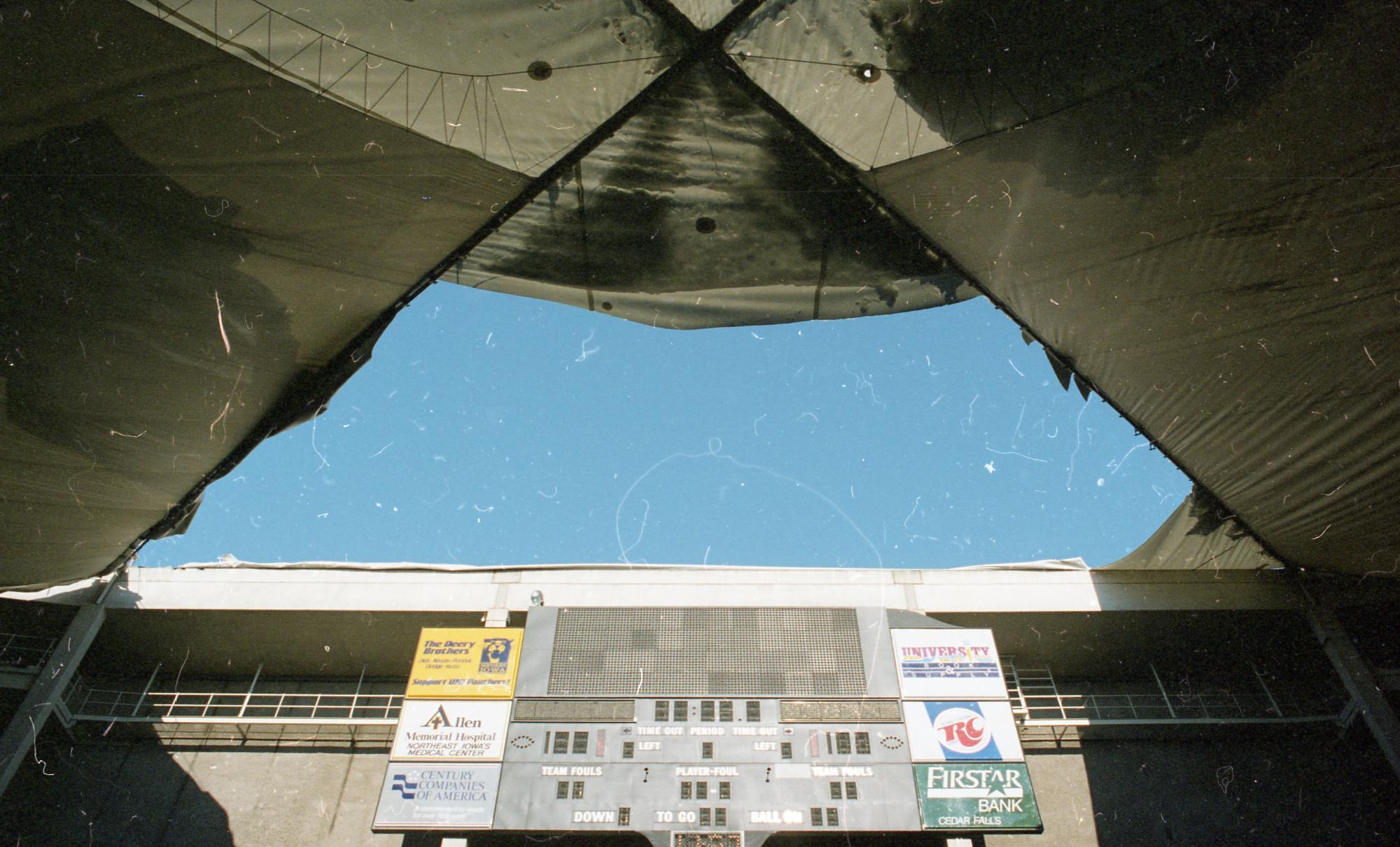
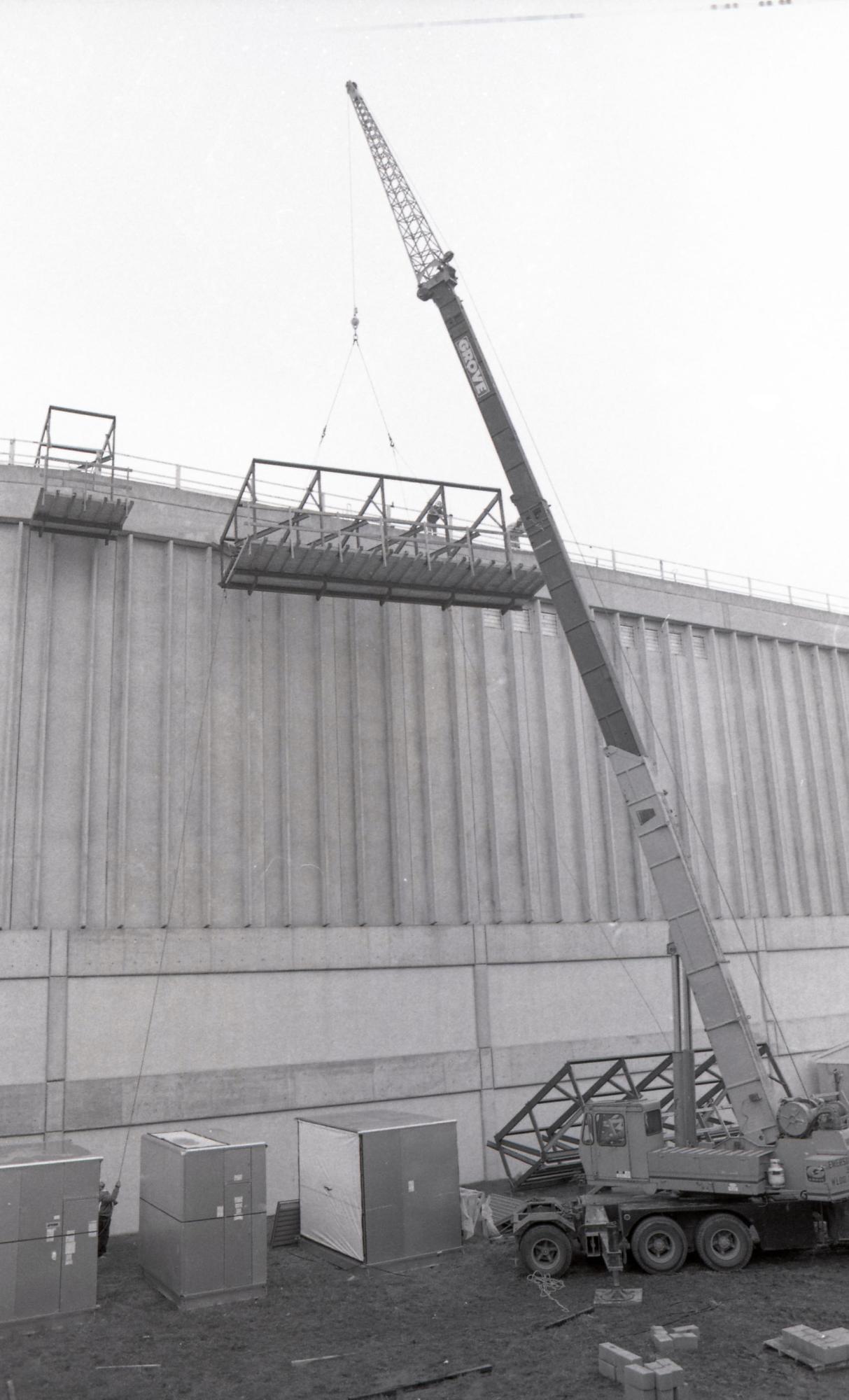
Commencement was moved to the West Gymnasium, and basketball games were shifted to McElroy Auditorium in Waterloo and the Five Seasons Center in Cedar Rapids. The roof was reinflated December 19, 1994, after a temporary replacement panel was installed by the Birdair Company from New York. Damage was covered under a $23 million insurance policy--with a $750,000 deductible clause--carried on the Dome by the university, though it would be February 2000 before the insurance company agreed to pay about $4 million to settle UNI's damage claim.
By late 1996, the UNI-Dome was one of nine air-supported domes in the United States. There were four fans available to blow air into the facility. Two ran most of the time, but one could support the roof if necessary. Two of the fans were 125 horsepower with a capability of blowing 135,000 cubic feet of air per minute. The other two fans were forty horsepower with capacities of 60,000 cubic feet per minute. Dampers allowed the Dome to maintain a relatively constant interior air pressure. Emergency generators could power the fans if regular electrical service were interrupted. But by that time, newer technologies had evolved, and the roof fabric was aging. So the Regents approved funding for a new roof that would not be supported by air. The new roof support system would consist of a series of arched beams with a central skylight. The cost of the project was estimated at $8.035 million, funded by the insurance settlement from the 1994 deflation and by revenue bonds. Light Structures Design Consultants were involved with planning the roof modifications. The new roof was projected to last thirty years.
Construction did not start until fall 1997, when exterior work began on strengthening the outer ring to support the heavier roof.
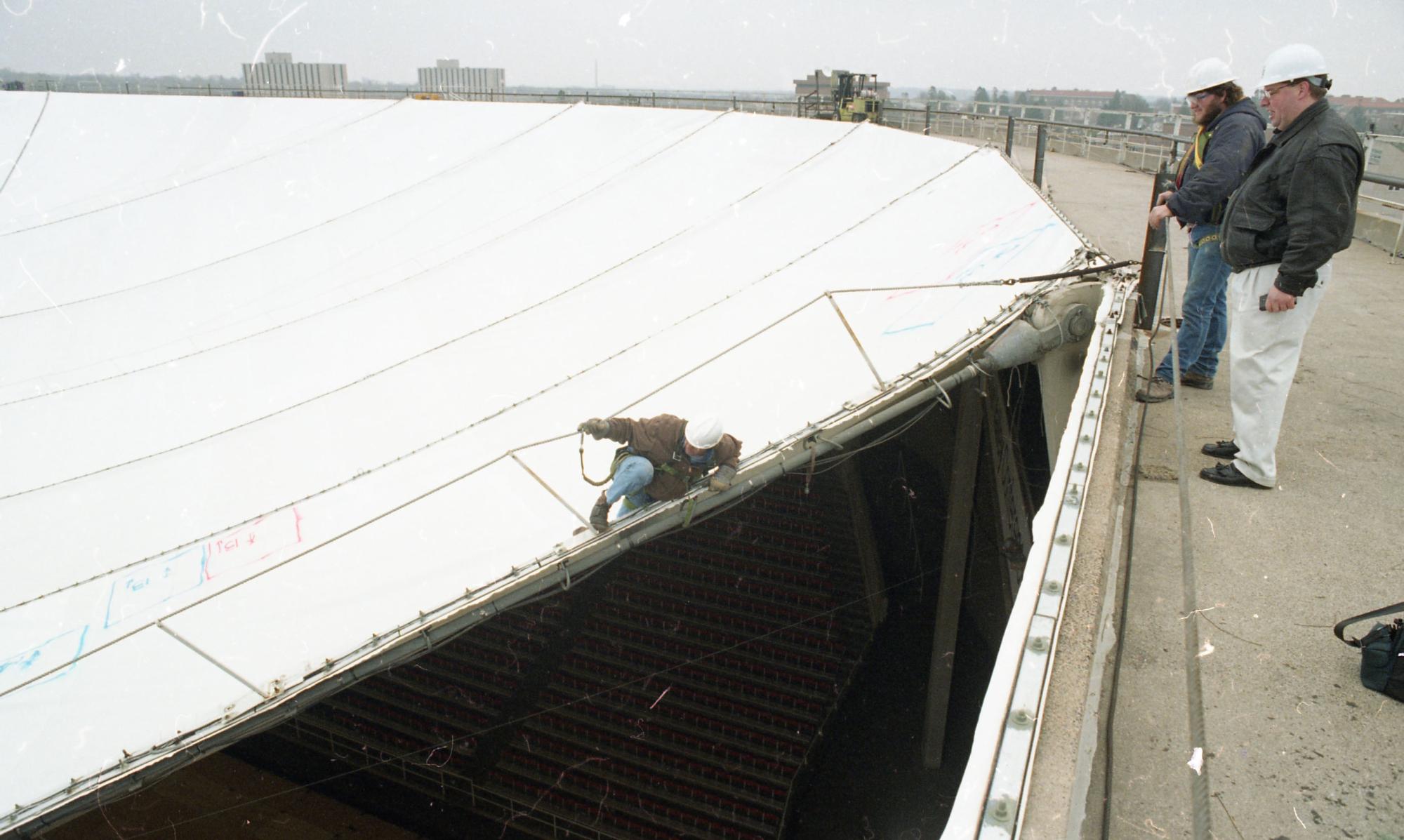
Penn-Co Construction Company was the general contractor for the roof project. On March 23, 1998, the Dome was deflated for the last time to allow construction to begin on the roof itself. Most of the old roof fabric went to the Bremer County landfill to be used to cover refuse.
The new "hybrid" roof would consist of two parts. The lower section would have an external finished surface of stainless steel. The translucent center portion would be Teflon coated fiberglass. This center portion, or skylight, would comprise about 45,000 of the 160,000 square feet of roof. The project, including interior modifications and remodeling, was budgeted at $11.8 million. The facility was to be ready for the September 10, 1998, football game against McNeese State.
The first beam for the solid part of the roof was in place by late April. By mid-June all the main beams were in place.
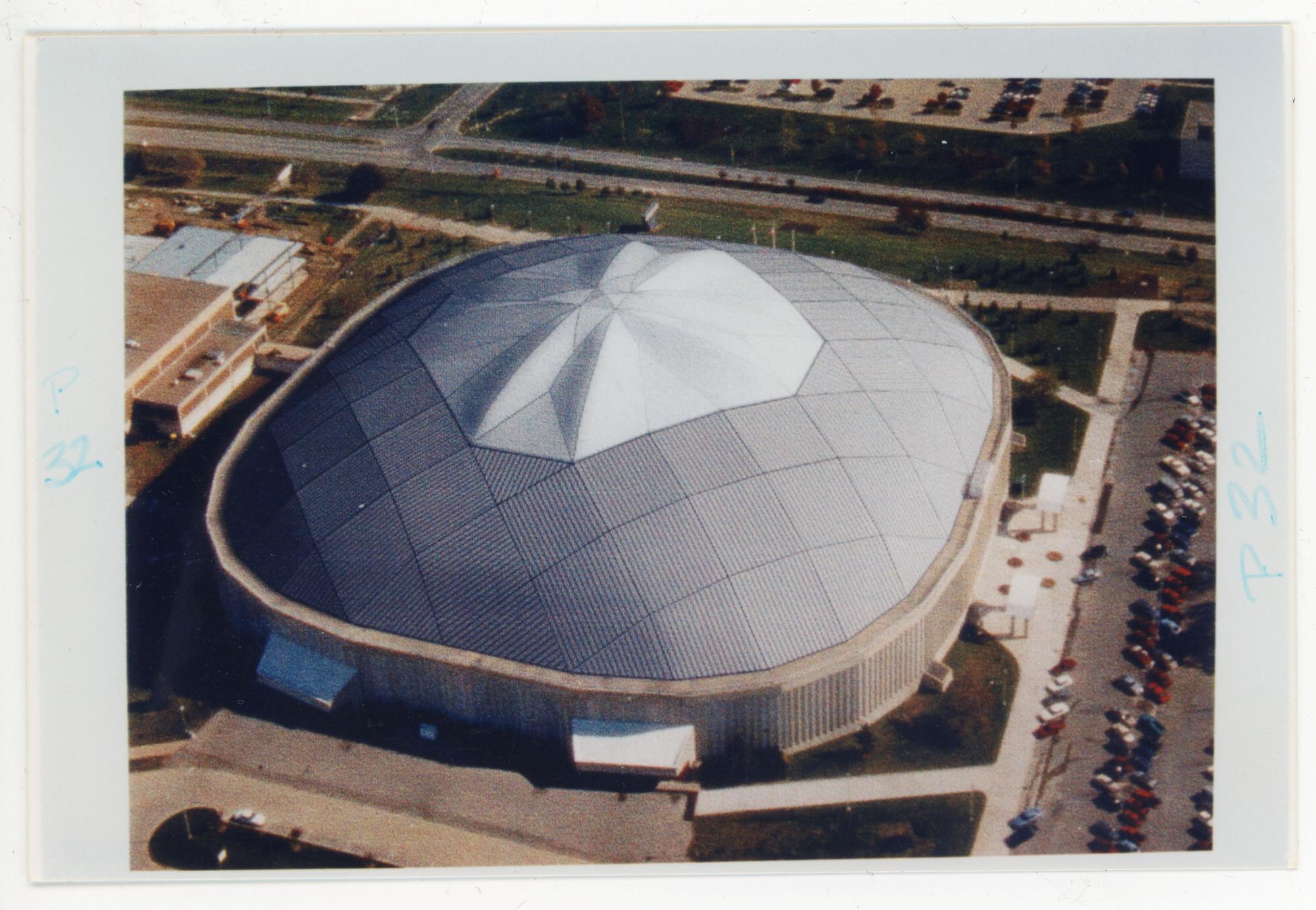
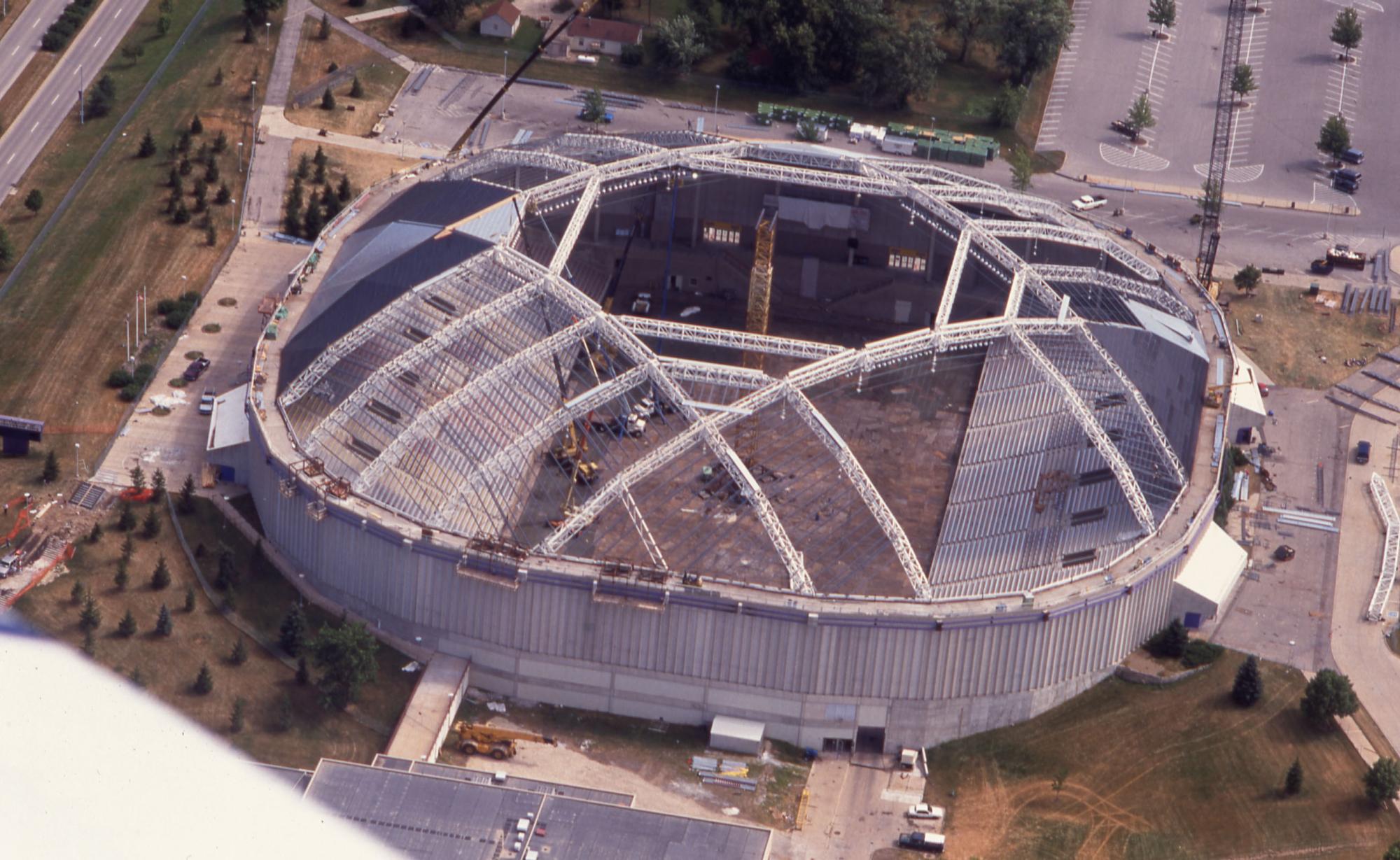
In mid-July the contractor stated that construction complications would delay completion of the project until October. Construction crews from as far away as Germany and Ireland worked very long hours to bring the project to completion. The opening home football game was played at Waterloo's Memorial Stadium, but the field was ready for play on October 3, 1998, against Southwest Missouri State.
Unfortunately, the roof leaked. During a football game on October 28, 1998, rainwater dripped onto the playing field and onto a portion of the crowd. Dome operations manager Kevin Buisman said that the exterior fabric had not been completely installed and that problems could be expected to occur. Ongoing work forced December Commencement ceremonies to be held in the West Gymnasium. In January 1999 both men's and women's home basketball games were moved to the West Gymnasium for the remainder of their seasons due to continuing leaks in the Dome roof. The leaks seemed to be located in places where the steel and fabric portions of the roof met. Contractors returned to campus in the spring of 1999 to concentrate their work on those problem areas.
On July 21, 2000, UNI filed a lawsuit against Penn-Co Construction and Light Structures Design Consultants for what the university alleged were defects in construction of the new roof. Both defendants eventually settled with UNI. In September 2002, Light Structures Design Consultants settled its portion of the suit with a payment of $1,424,803.62 to the university. In December 2003, Penn Co Construction paid the university $1,400,000 as its part of the settlement.
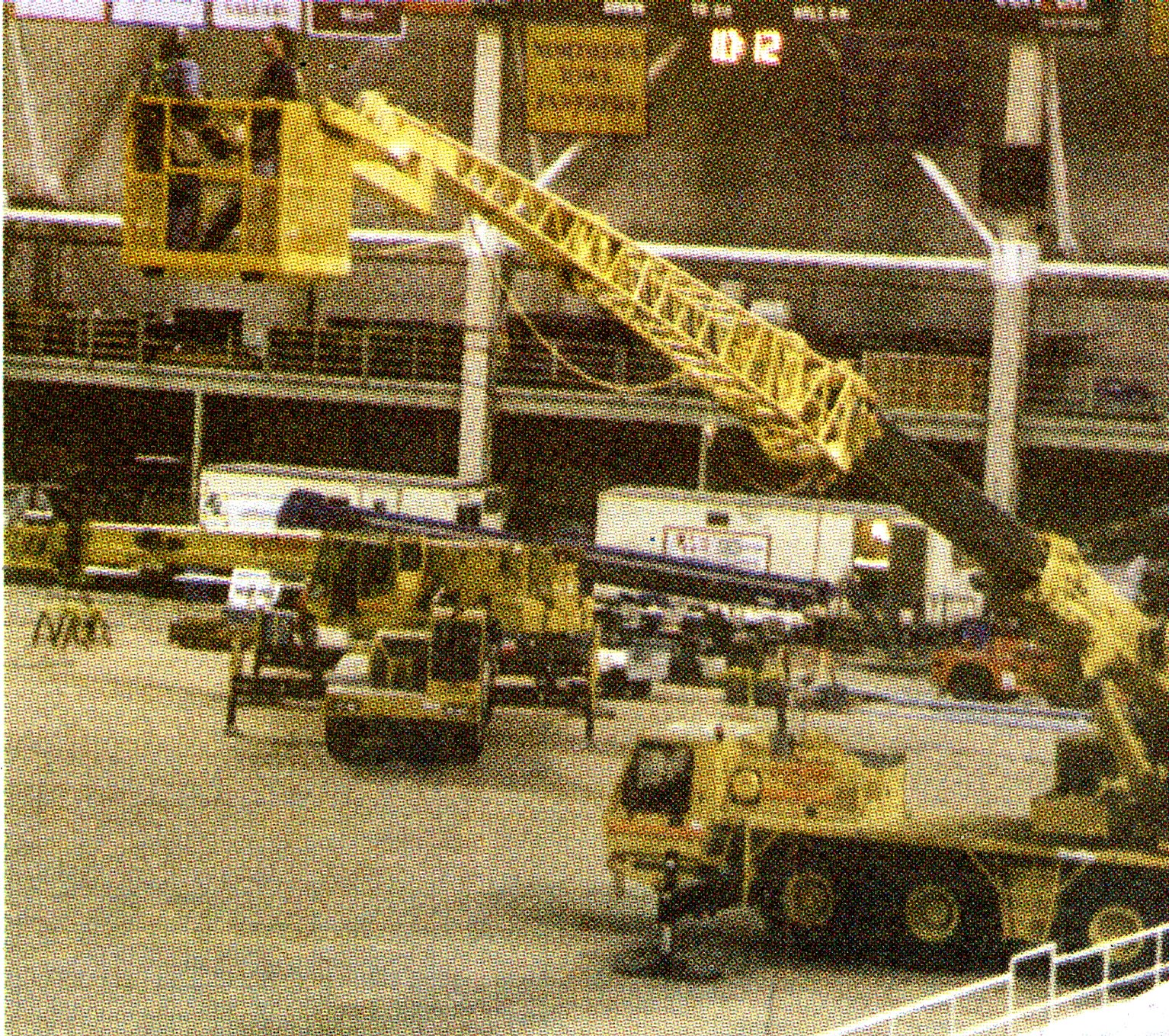
The university hired an engineering firm to assist in correcting problems associated with the construction. In May 2001 the Dome closed for the remainder of the spring and most of the summer for repair and improvements. It was scheduled to be ready for the first football game of the 2001 season on August 28. On September 29, 2001, the Dome celebrated its twenty-fifth anniversary with speakers and a ribbon-cutting ceremony before a football game against Youngstown State. The Dome closed again for the spring and summer of 2002 to continue to work on various problems, especially the leaky roof.
In October 2002 a video board was installed in the Dome. Officials hoped that it would help to generate advertising revenue for the university.
On July 10, 2009, a strong windstorm passed through the central part of Cedar Falls. The storm caused considerable damage to the Dome roof. The stainless steel portion of the roof sustained the most damage. The university made immediate repairs in order to keep the building watertight. In December 2009, the university asked the Board of Regents for permission to undertake major repairs or even a roof replacement during the summer of 2010. The repairs would cost about $4.3 million dollars. The roof is insured by Traveler's Insurance Company, with a $100,000 deductible clause.
In the summer of 2014, the Dome scoreboard underwent a $1.2 million upgrade. In July 2014, Director of Athletics Troy Dannen stated that planning was underway for major UNI-Dome renovations. He said that the Dome needed wider concourses, premium seating, and larger restrooms. The renovations would be a "low eight-figure project" and would be part of a larger capital campaign. It is possible that the renovation might take place by 2016.
Summary
The UNI-Dome, the first significant outcome of private fund-raising for the University of Northern Iowa since the construction of the Campanile in 1926, was built to house a variety of performances and activities. In most cases, the Dome has served the university and the community well. It stands as a tribute to the alumni, community people, and university administrators who strongly supported its construction. This group found ways to overcome opposing viewpoints and crushing monetary inflation to bring the project to completion. While the Dome has seen more than its share of problems over the years, most of the problems have had to do with the building's experimental roof design. Yet, had planners decided to use a conventional roof, the added expense would likely have delayed the project for many years. Troubles with the roof were a price to be paid for getting the facility built in a reasonable amount of time.
Currently the Dome is used for athletics, concerts, sports camps, recreation, community events, craft shows, convocations, and Commencement ceremonies. It has been the site of national sports tournaments, performances by some of the best-known groups in popular music, and memorable UNI athletics contests. It has come to be one of the most widely-recognized symbols of the University of Northern Iowa, and it is likely to remain so for many years to come.
Compiled by Library Assistant Susan Witthoft; edited by University Archivist Gerald L. Peterson, July 1996; substantially revised and updated by Gerald L. Peterson, with research assistance by Student Assistants Jacki Ellenwood and Anthony Boggs, and with scanning work by Library Assistant Gail Briddle, October 2003; last updated January 28, 2015 (GP); photos and citations updated by Graduate Assistant Eliza Mussmann April 12, 2023.
